The dye plants in Melinda’s carefully tended garden are all flowering, and I’ve been back in my dye room, which was once the milk-room of our creamery. I love the process of simmering the dye plants, preparing the yarn, and then dropping the skeins into the vat and seeing the color instantly bloom on the yarn. I generally simmer the yarn in the dye bath for a few hours, then leave it to sit and cool overnight before pulling the yarn out and hanging it to dry.
Mexican marigold is a beautiful flowering shrub; we got cuttings last year from our friend Helen Krayenhoff who has a nursery in Oakland. The foliage and flowers are used together to make a dye bath that gives a warm yellow. Melinda cut me boughs a few weeks ago and I dyed some of our 2-ply Romney yarn to create this lively yellow lot, already for sale on our web site.
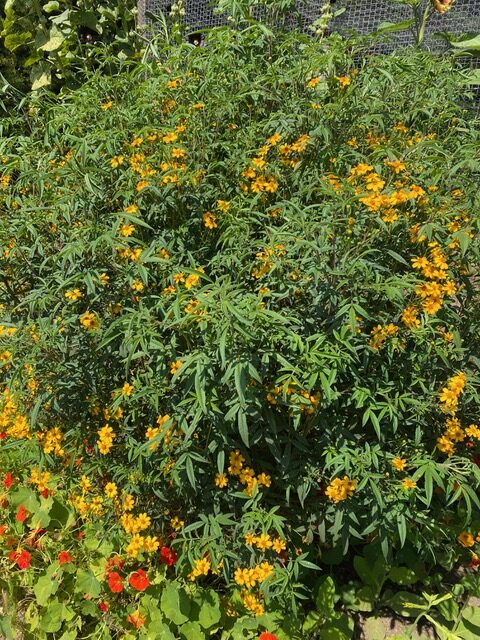

The dark purple flowers of Black Knight Scabiosa produce a range of greens. I first dyed yarn with Scabiosa two years ago, using some dried blossoms from our friend Peggy Agnew. I loved the color, so Melinda got seed and planted our own patch. This is my second season dyeing with it. I started with 6 skeins of our 2-ply Romney DK-weight yarn, and got an intense green.


There was so much color that I prepared a second lot: 6 skeins of my East Friesian worsted-weight yarn, and got a lovely, lighter green with what color the dye bath had left to give.
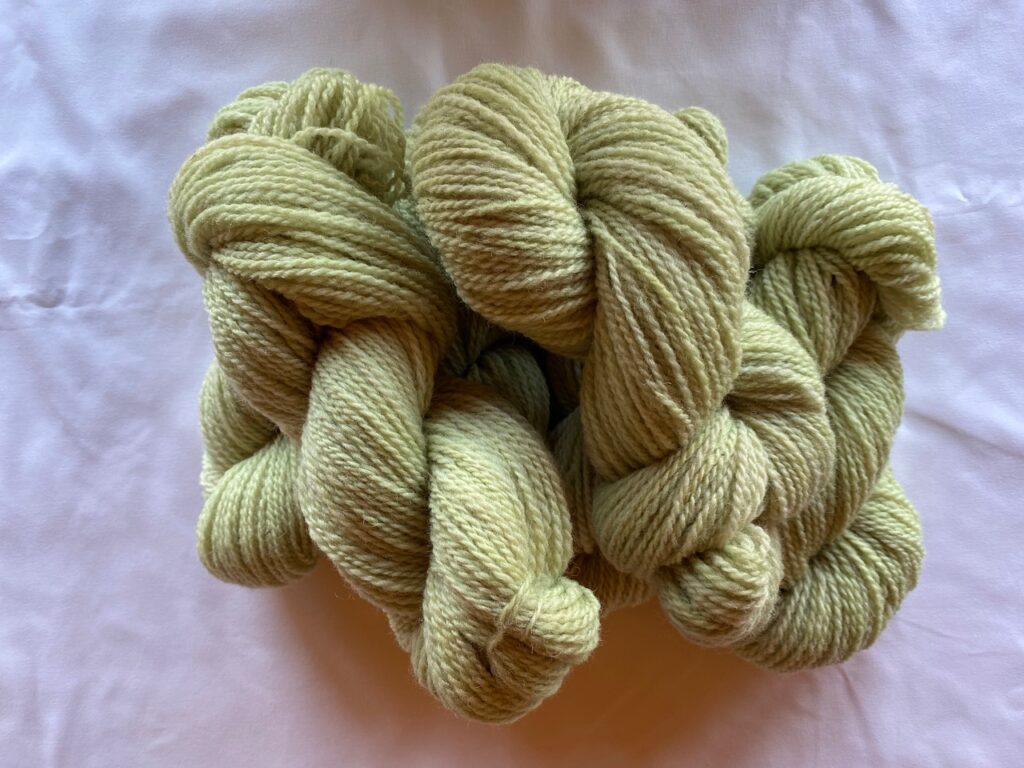
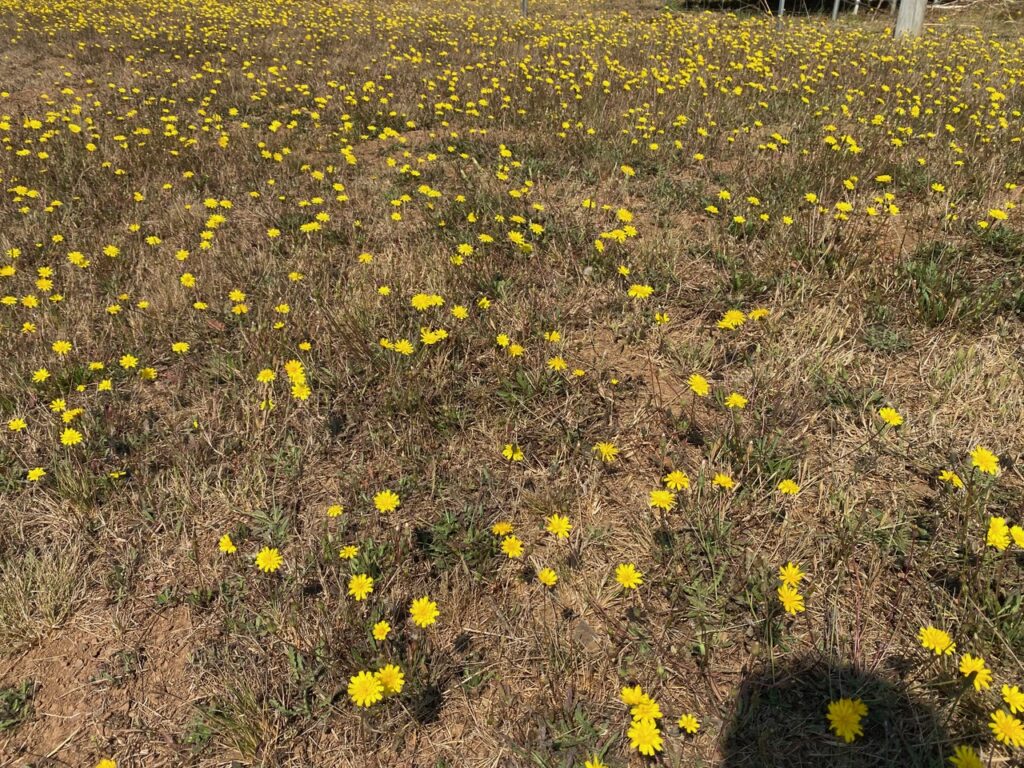
Dandelions are blooming all along the verge of our driveway right now. They were the first flower that I dyed with, two years ago when I was quarantining with Covid, and I loved the yellow they produced.
When I first used them in 2022, I used the “Picture This” app on my phone which identified them as something known as Smooth Cat’s Ear, or False Dandelion. I subsequently learned that in large numbers Smooth Cat’s Ear can be toxic to horses, which led to a little panic on my part and a hasty survey of the horse pasture, reassuring myself there are no dandelions growing there.
But I continue to learn about dandelions and their impersonators! (This is my third edit of this blog post as I keep learning more!) This year as I was picking, I used Picture This again and it identified it as Rough Hawkbit, another dandelion-like plant. The flowers are on individual stems, unlike Smooth Cat’s Ear, which frequently has forked stems. And both of these impersonators differ from true dandelions in that they have very spindly, solid, stalks, while true dandelions have thicker, hollow, stems. I convinced myself that the flowers on our ranch are Rough Hawkbit, and that I had misidentified them two years ago as Smooth Cat’s Ear.
Then the other day I was looking down at some “dandelions” and noticed they clearly had forked stalks! So we have both kinds of false dandelions. And just yesterday I was looking at a different patch of dandelions and realized they have the thicker, hollow, stems of true dandelions, confirming that all three varieties are growing on our ranch.
When I parked myself in the middle of a patch of “dandelions” a few weeks ago and picked and picked until I had a pound or so, I am relatively sure they had spindly, solid, and unforked stems, so I think the flowers I dyed with were Rough Hawkbit, and my phone app agreed with that ID.
The golden-yellow results were similar to what I got two years ago from the Cat’s Ear.
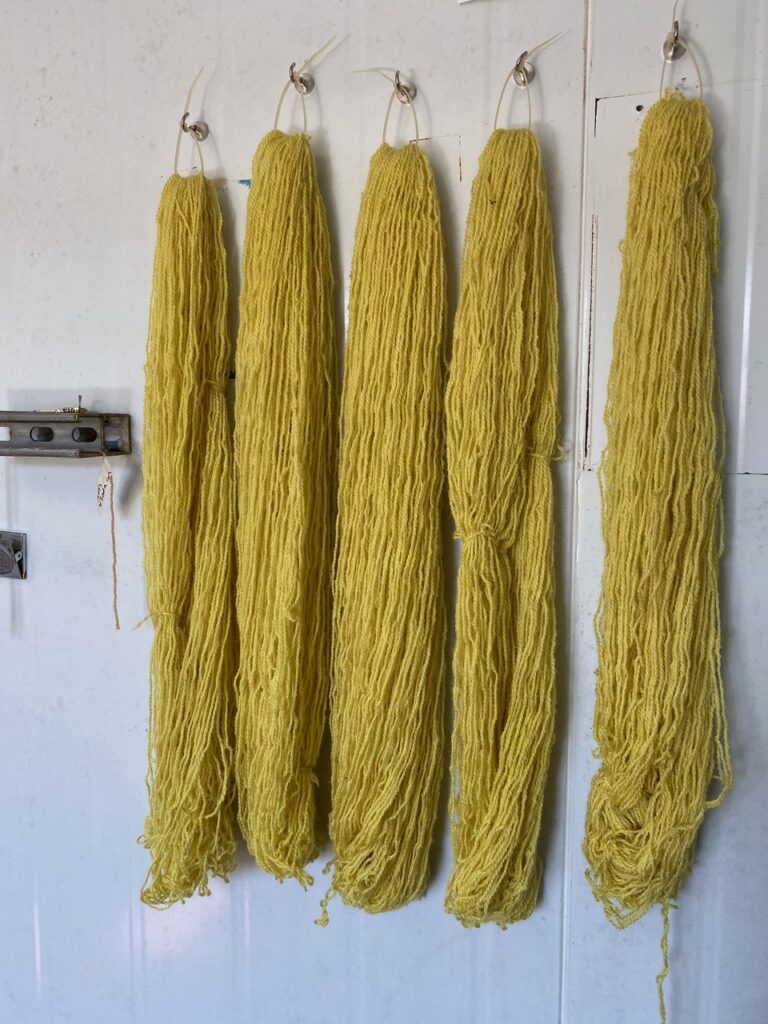

Weld is a two-year project; the biennial plant puts its energy into vegetative growth in its first year, and blooms in the second. Our weld bloomed a week or so ago, and Melinda worried that she had missed its peak of dye production, which is meant to be right when it blooms. But we decided she would harvest it anyway and I would give it a try. So she cut the delicate stalks last Friday, and I made a dye pot over the weekend. I was looking forward to the intense gold color it is known for.But I made a critical error. After I had simmered the stalks and strained the dye bath, I eagerly dropped my yarn into the vat before adjusting the pH. The dye bath should be slightly alkaline to give the best color, and when I checked, it was slightly acidic. I could already see that the yarn was picking up gorgeous color, so I went ahead to see what I would get.

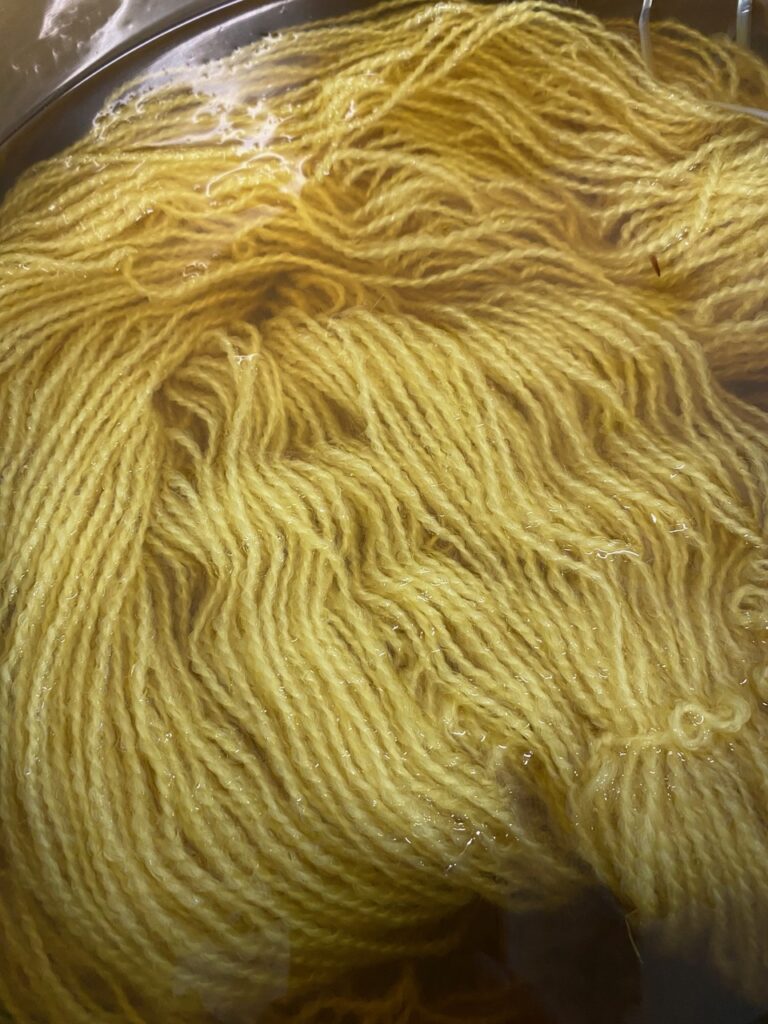
The yarn came out a soft butterscotch color. I spun the excess dye bath out of the yarn and hung it to dry, but then I changed my mind and decided to go for the gold! I adjusted the pH in the dye bath to 8 by adding some soda ash, and put the yarn back in for another simmer and let it sit overnight. Success! A beautiful intense gold!
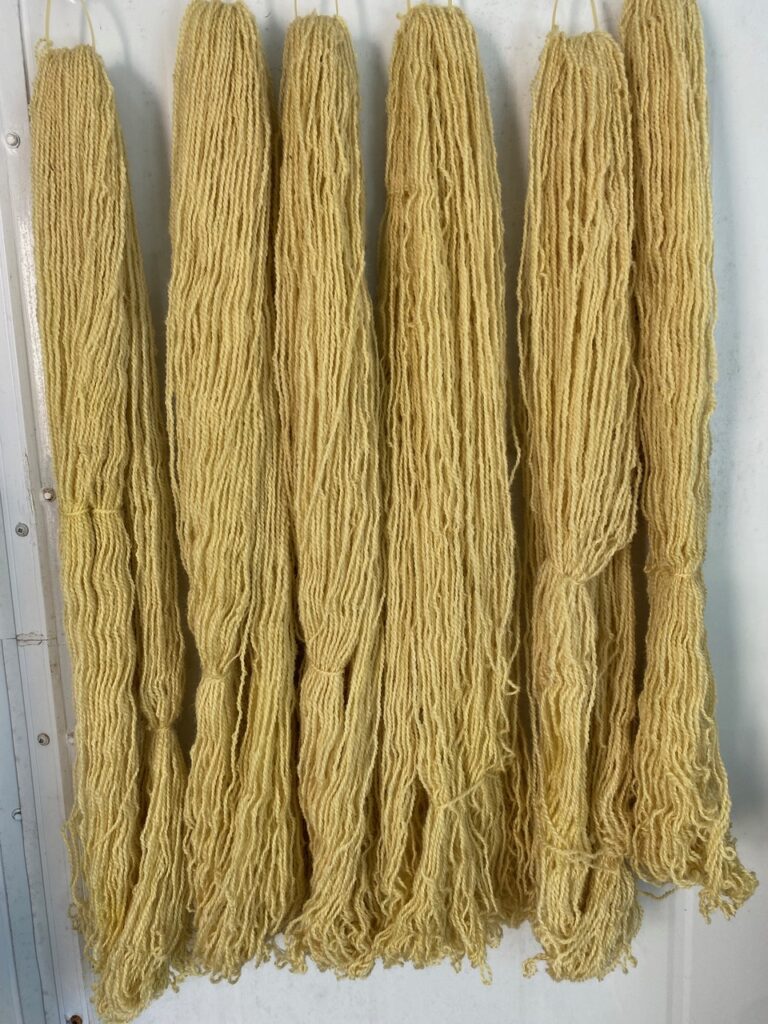
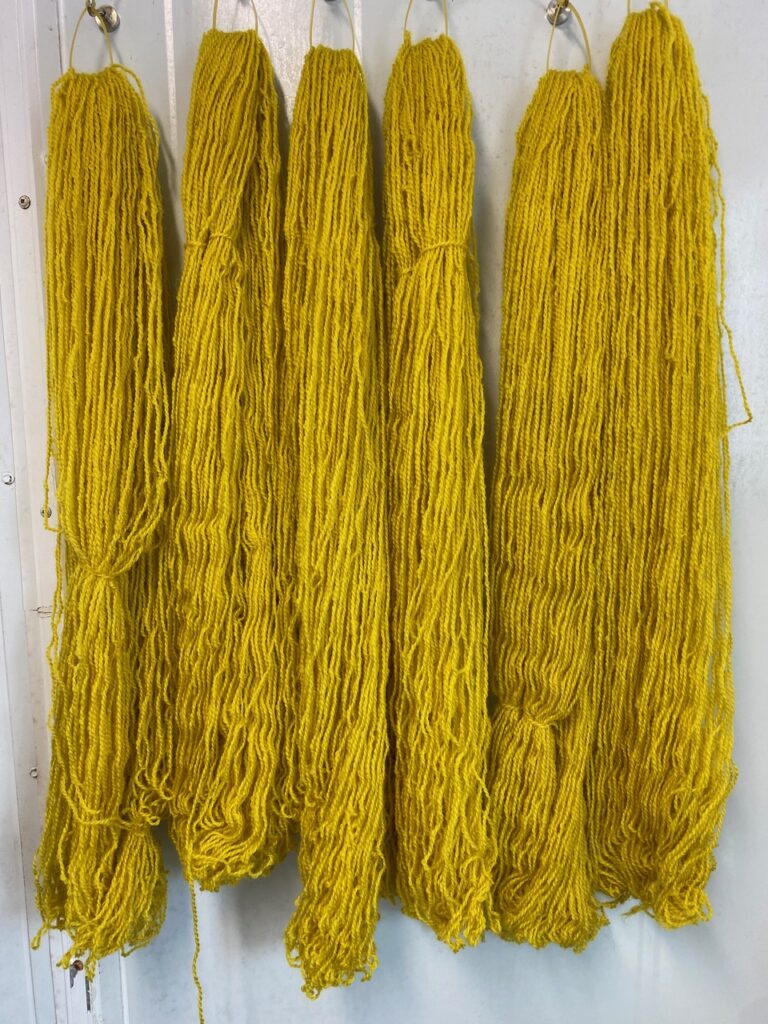
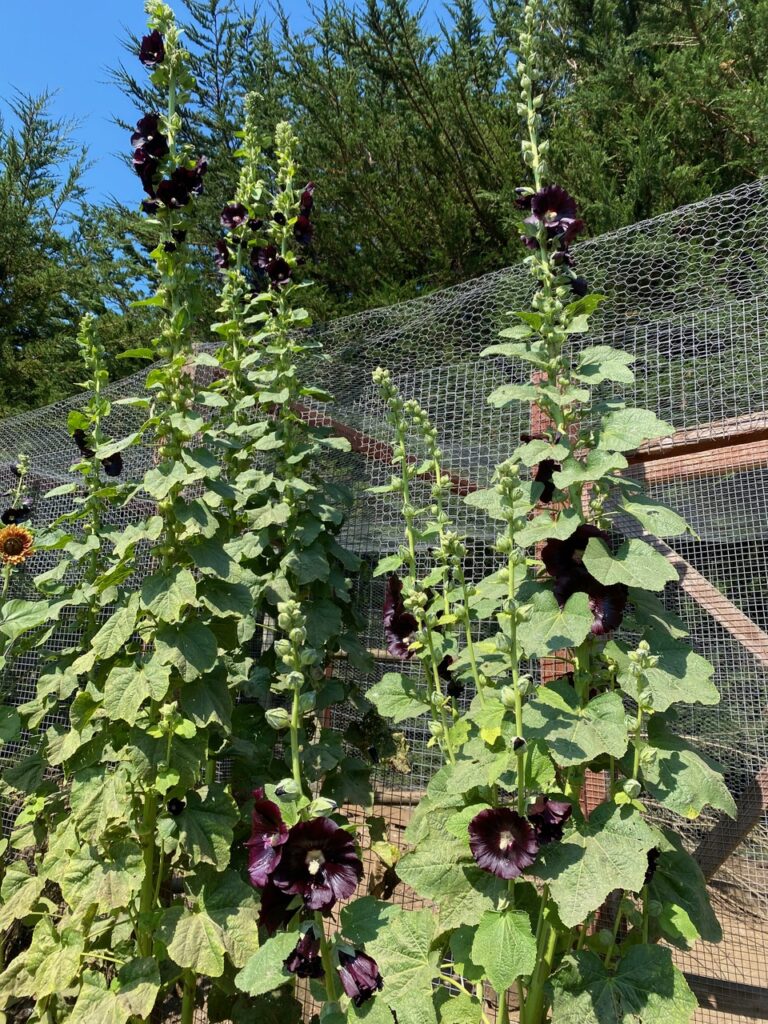
I don’t have too much to say about these hollyhocks! They are striking flowers, and their purple petals are reported to give a lovely blue or green. I’ve tried twice now and all I have achieved is a washed-out greenish grey! Very disappointing, but I am not giving up yet.
However I think for my next dye-forays I’m going back to some tried-and-true colors, the wonderful oranges, rusts and caramels I know I can get from Melinda’s dyer’s coreopsis and from the dried dahlias I have from my friend Fran.
Then maybe to some wild coyote brush for green, and another try with those hollyhocks. Stay tuned!
The yellows and golds from the weld and dandelions will be in our web store soon.
